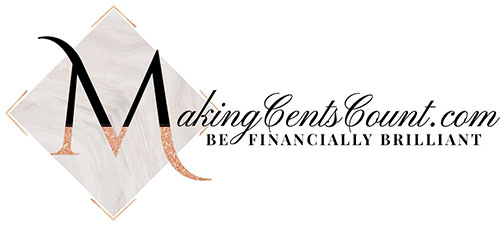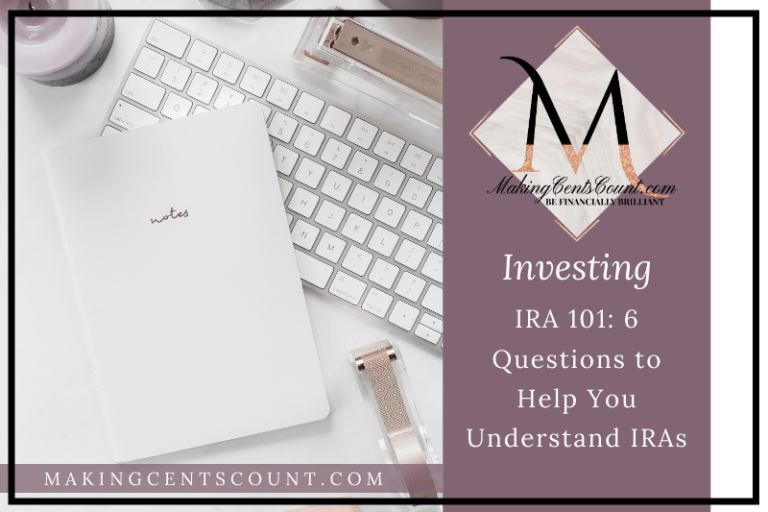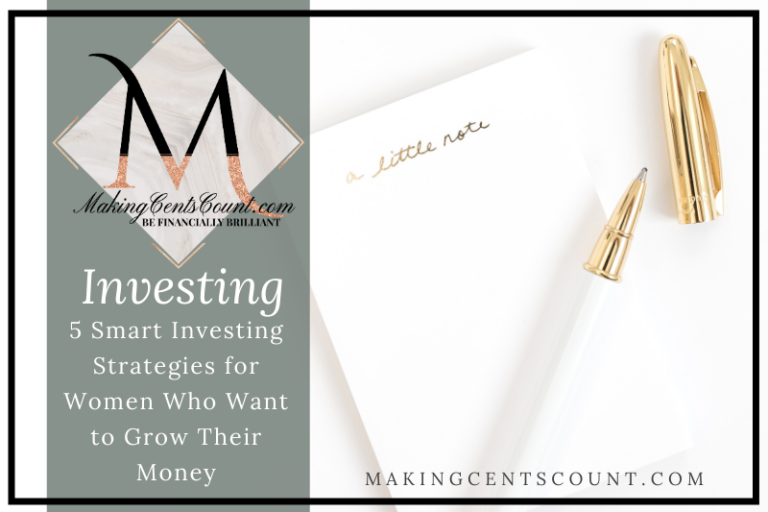Retirement Ready: Unveiling 7 Dynamic Strategies for a Secure Financial Future
Estimated reading time: 14 minutes
Retirement Ready: Unveiling 7 Dynamic Strategies for a Secure Financial Future is the perfect resource for women who are thinking about and planning for their retirement. It offers an in-depth look at the seven different strategies that can help ensure a secure financial future, providing you with invaluable advice that can help you become more financially prepared for retirement. We provide guidance on how best to plan and prepare for retirement, making it an ideal resource for women looking to ensure they will be financially secure in their later years.
Table of Contents
- Planning for Retirement with a 401(k)
- Preparing for Retirement with a 403(b) Plan
- Retirement Planning with a Governmental 457(b) Plan
- Using a SIMPLE IRA Plan for Retirement Planning
- Profit-Sharing Plan for Retirement Savings
- SEP Plans for Retirement Planning
- Saving for Retirement with a Pension or Defined Benefit Plan
- Making Cents Count Financial Organizer
Are you ready to start investing, control your finances, and prepare for retirement? Join our amazing community! You’ll receive exclusive financial tips from Making Cents Count, as well as unlimited FREE access to our resource library full of money-saving tools and guides.
Now, naturally, many of us postpone retirement planning until much later in life (when the horizon appears to be nearing). If you feel you haven’t adequately prepared yet, rest assured.. We are going to breakdown the seven most common retirement planning strategies to help you figure out exactly where you stand.
You’ve probably encountered terms like stocks and mutual funds, just like the rest of us. Maybe you’ve even invested in company stock through your retirement account, which is great, right? But what do you do with that stock when it’s time for retirement?
Discover everything you need to know about effectively preparing for retirement through the seven most commonly utilized retirement plans. Enhance your understanding to optimize your savings for the future you envision!
Planning for Retirement with a 401(k)
401(k) plans are often the retirement planning strategy people are most familiar with. The 401(k) is available through many “for-profit” and “nonprofit” organizations. The wide-spread availability explains why nearly everyone has heard of this type of retirement plan.
The following criteria are the standards for a 401(k):
- Eligible employees are at least 21-years-old with at least one year of employment (though some employers may be less restrictive).
- Eligible employees can contribute $22,500 (for 2023). If the employee is 50-years-old and above, they may contribute an additional $7,500 catch-up contribution, for a total contribution of $30,000 (for 2023).
- There may also be the following considerations for eligible employees:
- Employer matching
- Loan provisions
- Roth 401(k) contributions allowed
- 10% IRS penalty for early withdrawals (exceptions may apply)
In a 401(k), you make regular contributions to your retirement plan from each paycheck on a pre-tax basis. Now, this pre-tax opportunity is important and just one of the reasons why you should take advantage of a 401(k) if your employer offers it.
Company-Match
Your company also offers a significant benefit: a potential employer match. This means they match your contribution up to a specific percentage. For example, let’s say the company match is 4%. If you contribute 4% (pre-tax) from your paycheck to your 401(k) account, your company will match your contribution. Don’t overlook this valuable incentive!
When you contribute 10% to your 401(k), your company will match up to the 4% cap. We highly recommend taking advantage of this company match opportunity because it’s essentially free money!
Vesting Schedule
Whatever you’ve contributed to your account is 100% yours, with no vesting schedule. But if your employer has a match, most likely, there is what’s called a “vesting schedule.” The 4% match they’re contributing to your 401(k) isn’t all yours until you’re fully vested.
What does that mean? Well, let’s say you’ve been with a company for three years and put in $5,000 per year. If the company has a five-year vesting schedule, but you leave at the end of the third year, you take your $15,000 (which has hopefully grown based on your risk tolerance and investment allocation). But the company’s contributions are on a 5-year vesting schedule, based on their matching contribution of 4% (20% vesting each year = 100% at the end of year five). Then on year three, you’d only be 60% vested of what their matching contributions were, so you can only take a portion of the employer match.
So, if your company has a 401(k), be sure to take advantage (even if you don’t plan to be with the company for years to come. You can always roll your 401(k) over into an IRA or another retirement planning vehicle when you leave.
Pro-Tip
Pro-Tip: Always contribute to your 401(k) up to the company match. If your company matches 4% of your 401(k) contributions, then you should contribute (at least) 4%. You don’t want to miss out on free money! And when your company offers a match, that’s precisely what it is.
Preparing for Retirement with a 403(b) Plan
A 403(b) plan is another retirement planning option commonly used by 501(c)(3) nonprofit organizations and some public schools. These retirement planning options are accessible for teachers, instructors, or professors, and are similar to a 401(k).
The following criteria and standards usually apply to a 403(b):
- Typically, all employees are eligible.
- Employees can contribute $22,500 (for 2023). If the employee is 50-years-old and above, they may contribute an additional $7,500 catch-up contribution, for a total contribution of $30,000 (for 2023).
- There may also be the following considerations for eligible employees:
- Employer matching may be available
- There may be loan provisions available
- Roth 403(b) contributions may be allowed
- 10% IRS penalty for early withdrawals (exceptions may apply)
Catch-Up Provision
I want to touch on the “catch-up” provision just a little bit more. As with the 401(k), the catch-up option allows anyone 50-years-old and up to add $6,500 (per year) into your retirement account.
The catch-up provision is a great retirement planning option when you haven’t saved quite as much as you would like leading up to retirement. When this catch-up money is funneled into your retirement plan, it reduces your taxable income by the amount you contributed!
Pro-Tip
Pro-Tip: A good 403(b) should offer some low-cost, passive investment options such as Exchange Traded Funds (ETFs). If you’re paying more than 0.50% a year in expense ratios for different funds (and, generally, the lower the better), then your plan may not have great investment options.
Retirement Planning with a Governmental 457(b) Plan
A governmental 457(b) plan applies to any state or local government entity. When I think of the 457(b), I automatically think of all the sheriffs I’ve had as clients. Such a fantastic group of people! I’m glad that there’s this excellent retirement planning option offered by most governments and municipalities.
The following criteria and standards usually apply to a 457(b):
- Eligibility is generally at the employer’s discretion.
- Employees can contribute $22,500 (for 2023). If the employee is 50-years-old and above, they may contribute an additional $7,500 catch-up contribution, for a total contribution of $30,000 (for 2023).
- Employees don’t have to wait until 59 1/2 to start withdrawing contributions
- There may also be the following considerations for eligible employees:
- Employer matching may be available
- There may be loan provisions
- Roth 457(b) contributions may be allowed
- No penalty for early withdrawals, though you will owe income tax on all withdrawals, regardless of your age.
Like the teachers and nonprofit workers who need to catch-up their 403(b) retirement account, the government workers and sheriffs can also use a catch-up provision to help retirement planning with their 457(b) account.
Two Types of 457(b) Plans
- Governmental 457(b) plans
- Non-Governmental 457(b) plans
Pro-Tip
Pro-Tip: This is probably the most important thing to understand when investing in a 457(b) plan. There are two types of 457(b) plans to be aware of:
- Governmental 457(b) plans
- Non-Governmental 457(b) plans
Governmental and non-governmental plans are both deferred contribution plans, but they have many different rules, regulations, and responsibilities that come along with them.
Using a SIMPLE IRA Plan for Retirement Planning
A SIMPLE IRA is another excellent retirement planning option. SIMPLE IRAs are employer-sponsored retirement accounts that apply to for-profit, nonprofit, or government organizations, is available to any small business with 100 or fewer employees.
The following standards and criteria are typical for a SIMPLE IRA:
- Eligibility for those employees who have had at least $5,000 of compensation in any two previous years of service, and who anticipate their salary of at least $5,000 in the current calendar year.
- Employees can contribute $15,500 (for 2023), or $19,000 (for 2023) for employees 50-years-old and above.
- There may also be the following considerations for eligible employees:
- Additional employer contributions are required
- No loan provisions avaible
- No Roth contribution option
- 25% penalty on early withdrawals during the first two years; 10% penalty after that (exceptions may apply)
Pro-Tip
Pro-Tip: Contributions to a SIMPLE IRA are not subject to a maximum age requirement. For example, an individual who is still employed after age 72 (70 1/2 if the employee reached age 70 1/2 before January 1, 2020) can continue to make SIMPLE IRA contributions.
Profit-Sharing Plan for Retirement Savings
The goal of these plans is to reward all eligible employees for their contribution to the business’ success and align their financial well-being with that of the company.
That’s what makes this next grouping of retirement planning option is a little different, in that the employer is the sole contributor; this is particularly obvious with the profit-sharing plan. Profit-sharing plans are offered primarily in for-profit organizations, though nonprofits and government employers may also establish a profit-sharing plan.
Profit-sharing plans are useful for preparing for retirement. It’s important to be aware that any contributions made to this plan are solely at the discretion of your employer. I’ve had clients who felt that the contributions made into their company’s profit-sharing plan weren’t nearly what they expected based on how well (they thought) the company was doing. So, while profit-sharing plans are useful, I would caution against using them as your sole method of retirement planning.
Typical Standards and Requirements for Profit-Sharing Plans
- Eligible employees are 21-years old and above, and work 1,000 hours over a 12-month period after being hired.
- Unless it includes a 401(k) cash or deferred feature, a profit sharing plan does not usually allow employees to contribute.
- The employer pays 100% of compensation, up to $66,000 (for 2023). In other words, the compensation limit for employer contributions may not exceed the lesser of 100% of your compensation, or $66,000 (2023). This limit increases to $73,500 (2023) if you include catch-up contributions.
- There may also be the following considerations and features:
- Employer contributions are discretionary
- Loans may be available
- May feature a vesting schedule
- The employee usually directs investments
Pro-Tip
Pro-Tip: When investing in a Profit Sharing Plan, there are three basic types to be aware of:
- Traditional
- Age-weighted
- New Comparability
A profit sharing plan offers employers a lot of flexibility when they decide to offer this benefit to employees, unlike other retirement plans.
SEP Plans for Retirement Planning
SEP (Simplified Employee Pension) plans are typically available at for-profit, nonprofit, and government organizations, with one of more employees.
The advantages of of a SEP account include a reduction in taxable income, tax-deferred compounding, high contribution limits, and a practical way to save for retirement.
When I think of a SEP plan for retirement, I always think of small businesses. I believe these retirement plans work quite well when you’re a small family business/owner, wanting to provide a retirement plan for your family members. Of course, SEP plans work well in other areas where it’s applicable, but they work exceptionally well in the family small business niche.
The following standards and features are typical of SEP plans:
- Eligible employees are 21-years-old and above.
- Eligible employees have performed service in at least three of the prior five plan years and received at least the required minimum compensation in the current year; the minimum compensation is $750 (for 2023).
- Compensation limit for employer contributions may not exceed the lesser of 25% of your compensation, or $66,000 (for 2023). Note: Elective salary deferrals and catch-up contributions are not permitted in SEP plans.
- There are also the following features of SEP plans:
- Employer are not required to make annual SEP contributions
- Contributions to a SEP are immediately 100% vested
- No loan provisions available
- Employee always directs investments
Pro-Tip
Pro-Tip: Some financial institutions require the Traditional IRA to be labeled as a SEP IRA before they will allow the account to receive SEP contributions. Others will allow SEP contributions to be deposited to a tradtional IRA regardless of whether the IRA is labeled as a SEP IRA.
Saving for Retirement with a Pension or Defined Benefit Plan
Many of us have heard the term “pension.” It seems like an old school retirement planning tool, but it’s still around. Pensions and defined benefit plans are available in for-profit, nonprofit, and government organizations.
The defined benefit plan provides the highest contribution and tax deduction. The contributions are calculated based on the employees’ age and compensation.
Pension plans are the king of kings when it comes to employer-sponsored retirement plans. These are the old gold standard. But you’ll find fewer and fewer pension plans offered as you pursue new job opportunities and explore the retirement benefits. It’s almost as if pension plans are on the verge of extinction.
Remember back in the day (waaay back) when dear ol’ Grandpa (or now Great-Grandpa) would work at the same company for 30 years? He would attend a retirement party, thanking him for all those years of dedicated service where they would gift him with a gold watch. From there, he would sail into the sunset and start collecting on his pension.
You might recall the free money we were talking about earlier? With this employer-sponsored retirement plan, you don’t add a dime! However, your employer must!
Features and Criteria
So what is a pension? Some features and criteria of pension plans are:
- If the Plan document does not exclude an employee group, the employer may require a minimum age of 21 and a one year waiting period. Additionally, the employer may require the employee to have worked at least 1,000 in a year
- Contribution limits are the lesser of $265,000 or 100% (for 2023) average compensation for the highest three consecutive years.
- Additional features of a pension plan typically include:
- Mandatory employer contributions
- Employee payments are not affected by market fluctuations. No matter what the underlying investments do, the employee retirement benefit stays the same.
- An employees spouse may be able to continue receiving guaranteed payments after the employee’s death.
- Loans are allowed, but usually not available
- May include a vesting schedule
- Employer directs investments
Pensions are now few and far between, as far as retirement planning goes. But if you find a company that offers a pension plan, and you absolutely love the job (and better yet, they love and respect you right back), jump on it!
As more people retire, companies have to pay those people every year, and the margin of return on many businesses isn’t enough to sustain that payout. Large companies find it increasingly costly to keep paying.
Disclaimer
Now for a disclaimer about companies who still offer this type of retirement plan. You might notice that grandfathered-in benefits differ slightly from those available to newcomers like you. Regardless, it’s a retirement plan that you’re not funding, so who wouldn’t love that?!
Pro-Tip
Pro-Tip: For full “vesting” in a Defined Benefit Plan, you need to stay put – usually for a period of five years. If you leave before then, you will forfeit any unvested pension benefits.
Hopefully, this guide to preparing for retirement has given you some clarity on the types of retirement plans out there, what they offer, and the differences. Take advantage of these plans, even if retirement seems far off — I promise it will be here before you know it!
If working on your finances is one of your goals right now (or, maybe it’s been a goal for some time), I suggest starting with the Making Cents Count Financial Organizer.
Our financial organizer is the robust answer you need. The organizer is our DIY financial services option, providing you with the tools to eliminate financial overwhelm.
In the exclusive Making Cents Count Financial Organizer, you’ll get:
- Clear strategies to get your finances under control
- Processes to organize and streamline your investments
- Guidance to track your legal documents, tax information, and permanent records
- Markers to know when you should meet with an attorney to establish a will or trust
- Templates, checklists, and step-by-step actions
- Insights on the financial-must haves to build a secure future
- Detailed How-To Guide for optimal results
If you want financial confidence, grab the Financial Organizer, and get results that fit *your* lifestyle!
Making Cents Count Financial Organizer
Once you get your budget rolling, check out my post on 6 Simple Steps to Get Financially Organized. This post also includes a helpful checklist available in my Resource Library (free to access).
Admittedly, this particular checklist has a larger-scale focus on your overall financial picture, but I genuinely feel that getting your finances organized is essential.
I’m so excited to invite you to join our Financial Success Society Waitlist! Our enrollment opens soon (so don’t miss a chance to get on the notification list). Your journey to financial success is unique and with this exclusive membership, you’ll receive the guidance you desire, enabling you to move financially forward, no matter where you are in your financial journey. At Making Cents Count, we offer an array of outstanding products and services to help you get control of your finances so they won’t control you!







